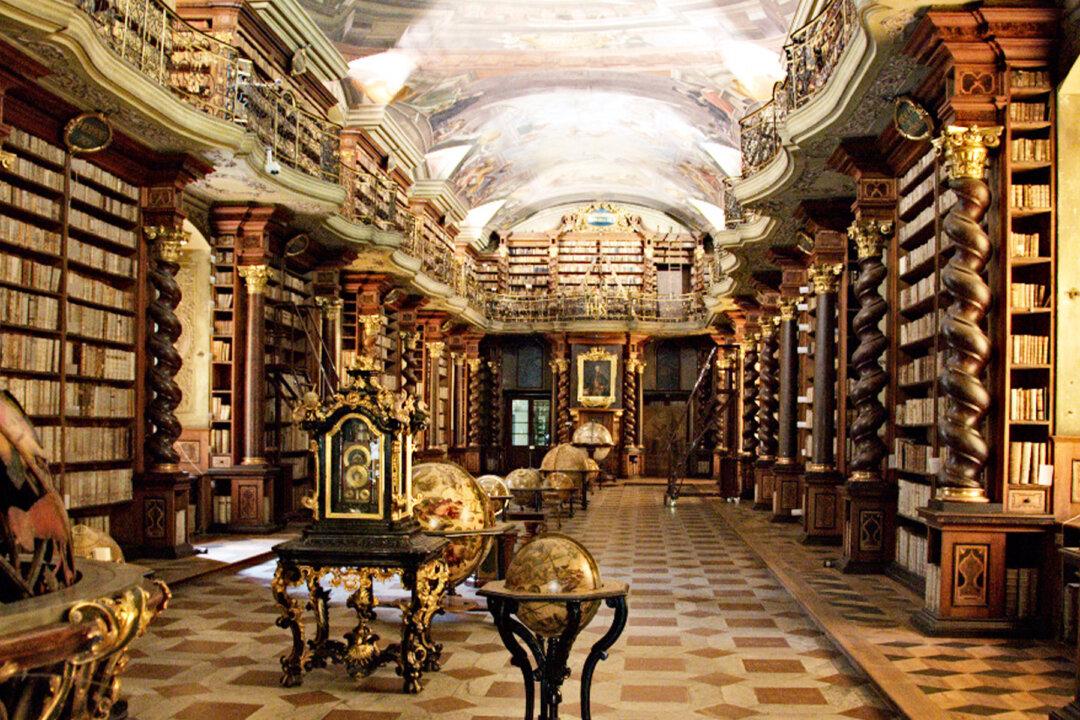Touted by many as the “most beautiful library in the world,” the Klementinum in the Czech Republic is a bonafide work of art. Nestled in the historical center of Prague, the baroque architectural masterpiece has inspired awe since the early 18th century. Its ornate interior must be seen to be believed.
The library was originally an 11th-century chapel but eventually expanded into 2 hectares and became a Jesuit university in 1556. Empress Maria Theresa recognized its official status as an observatory, library, and university in 1777.





